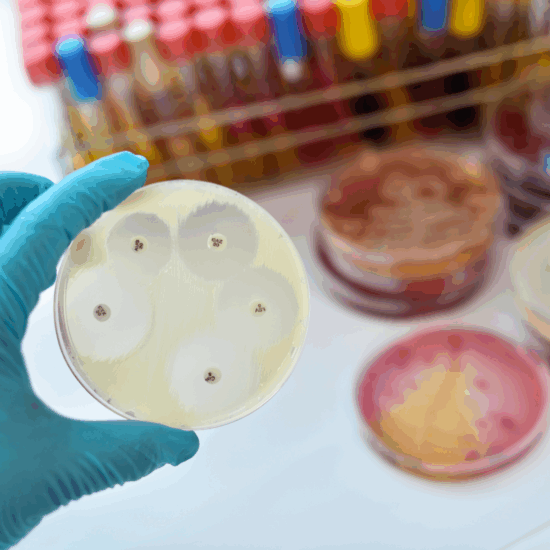Whitepaper: The Executive’s Guide to FDA Meeting Strategy
Published Oct 20, 2025
Published 01st October 2025

Over the last few years, there has been a significant increase in the number of clinical trials involving advanced therapy medicinal products (ATMPs). Particularly those that consist of or contain genetically modified organisms (GMOs). The UK saw a 60% growth in early-stage ATMP clinical trials in 2024, hosting 9.5% of all global ATMP trials.
Scientists treat some ATMPs as GMOs because they often use recombinant vectors or cells that could interact with the environment. They therefore require assessment for their potential impact on human health and the environment.
A key challenge for any GMO-ATMP developer is navigating the lengthy and complicated regulatory frameworks. The UK originally designed its GMO legislation to protect food and crops from contamination caused by genetically modified plants. This now presents a key issue. As a result, these regulations are not specifically tailored to medicinal products used in clinical trials. The EU established the GMO regulatory framework through Directives 2001/18/EC for Deliberate Release and 2009/41/EC for Contained Use. This resulted in different national interpretations and implementations through various member states, including the UK. This has led to a lack of alignment in requirements between countries.
This article aims to dismantle the complexities associated with the UK framework. This will help ATMP developers to understand regulatory requirements and streamline their product development through clinical trials in the UK.
UK Guidance Documents (The Genetically Modified Organisms (Contained Use) Regulations 2014, and Genetically Modified Organisms (Deliberate Release) Regulations 2002), define a GMO as a product that contains an “organism” capable of replication or gene transfer that has been “altered in a way that does not occur naturally”. Genetic modification occurs when the genetic material of an organism (either DNA or RNA) is altered by use of a method that is achieved by one of the following techniques:
Most ATMPs, by their nature, involve genetic modification of cells or viruses. For example, a CAR-T product is an autologous T cell that has been recombinantly engineered to express a chimeric antigen receptor (through viral transduction). However, not all ATMPs are also classified as a GMO. Some mRNA/gRNA-based therapies and gene-edited medicines (e.g., using CRISPR technology) are gene therapy medicinal products (GTMPs) but are not GMOs.
In the UK, regulators govern ATMPs under the Human Medicines Regulation 2012, as amended by the Human Medicines (Amendment) (EU Exit) Regulations 2020.
The Medicines for Human Use (Clinical Trials) Regulation 2004 regulates clinical trials for investigational ATMPs. They will require clinical trial authorisation (CTA) and ethics approval from the Medicines and Healthcare products Regulatory Agency (MHRA).
In addition to this, GMO-ATMPs are subject to separate biosafety regulations. The GMO permit process is separate from the MHRA trial application. In the UK, sponsors should independently submit MHRA/ethics applications and GMO applications. But, they must secure approval for both before dosing can begin.
According to the Health and Safety Executive (HSE)/ HSE Northern Ireland (HSENI), nearly all cases of GMO-ATMP treatment within clinical settings in the UK fall under the Contained Use Regulation. Contained use is defined as any activity in which:
…For which physical, chemical or biological barriers, or any combination of barriers, are used to limit their contact with, and to provide a high level of protection for humans and the environment.
This regulatory framework implements a high level of protection for human health and the environment. This is done through the design of the GMO-ATMP itself or through other means. These other means include implementing good microbial practices and good occupational safety and hygiene practices in facilities. It also includes good waste disposal and decontamination procedures to prevent the release of GMOs from controlled facilities like laboratories and hospitals.
In rare instances, when a GMO-ATMP is reviewed by the local Genetic Modification Safety Committee (GMSC) and deemed to be unable to be contained, it might be approved under the Deliberate Release (DR) framework.
Deliberate release is defined as any intentional introduction into the environment of a GMO or a combination of GMOs for which no specific containment measures are used to limit their contact with, and to provide a high level of safety for, the general population and the environment. This could be due to the nature of the GMO, such as its replication ability, possibility of shedding, and /or survival in the environment. Staff should explore and implement all containment measures (e.g., personal protective equipment, pharmacy preparation, and waste management) in these instances. Do not automatically consider preparation and administration sites prohibitive. Even in situations involving home preparation or the use of open systems, there is typically a means to reduce and manage the risk effectively.
GMOs are classified in one of four classes (Class 1 = negligible risk, Class 4 = high risk). Experts determine this classification based on the risk to both the environment and humans, as well as the containment and control measures identified in the risk assessment.
Researchers classify most clinical studies involving GMOs as Contained Use in the lowest hazard categories (Class 1 and 2).
The site must add any Class of GMO work it undertakes for the first time to the HSE/HSENI public register (with a fee). Thereafter, only new Class 2, 4 activities at that site require additional notification/fees.
GMO regulation and safety in the UK involves a coordinated framework of institutional stakeholders, each with distinct responsibilities:
The HSE: Serves as the competent authority overseeing the safe use GMOs. The HSE is responsible for assessing risk notifications, enforcing containment standards, and providing guidance to laboratories, research institutions, and industrial facilities engaged in GMO activities. The HSE’s regulatory oversight ensures that GMO work is conducted to protect human health and the environment. They have particular emphasis on risk assessment, containment measures, and emergency response planning.
Biological Safety Officer (BSO): Plays a central role in coordinating GMO activities between clinicians and internal/external GMSCs. The on-site BSO brings infection control experience. The BSO applies risk assessment measures and engages with the sponsor’s Regulatory Affairs Manager to align on submission requirements. Acting as the sponsor’s partner, the BSO provides local information and follow-up throughout the process.
GMSC: Relevant stakeholders (e.g., pharmacists, trial nurses, infection control staff, BSO, clinicians, etc.) typically form this committee. A local GMSC must risk-assess the product before any ATMP trial can proceed on hospital or university premises. This review examines containment procedures and waste disposal under current good manufacturing and biological safety practices. It also offers advice on the adequacy of the risk assessment.
Gene Therapy Advisory Committee (GTAC): For ATMPs, trials also involve specialised ethics review. GTAC reviews the trial dossier (historically 90 – 180-day review) and local NHS R&D offices conduct site-specific approvals.
| Procedural Step | Description |
|---|---|
| Risk Assessment and Classification | The sponsor (often in collaboration with the Principal Investigator) prepares a detailed risk assessment of the GMO-ATMP activities, covering risks to human health and the environment. The GMO is classified in either Class 1, 2, 3 or 4 based on the risk assessment. The local GMSC (often hospital-based) must review and advise on the risk assessment for Class 2 - 4 products. |
| Premises Notification | If the clinical site has not previously hosted any GMO activity, the site must notify HSE/HSENI of the premises (with payment), regardless of GMO Class. This adds the site to the GMO public register. Subsequent new trials on the same site require further notification only if they are Class 2, 3 or 4 GMOs. |
| Prepare and Submit Contained Use Application | The BSO at the site plays a key role here. The sponsor should liaise early with the local BSO (often an infection control or safety officer) to gather site specific information. The BSO will help complete HSE’s Contained Use application form, compile the risk assessment, SOPs and supporting documents, and handle submission. The completed dossier is sent to HSE (or HSENI for NI) by email or via the online form. Fees must be paid and proof attached. |
| Local GMSC Review | Often the HSE expects that the local GMSC has already seen and endorsed the risk assessment. If not, the sponsor may need to allow time for final GMSC approval. In practice, NHS Trusts require a positive GMSC opinion before the HSE submission is acknowledged. |
| HSE/Scientific Advisory Committee on Genetic Modification Review | Upon receipt, HSE/HSENI registers the submission. For Class 3/4 (and sometimes novel Class 2) dossiers, HSE may refer the technical details to its Scientific Advisory Committee on Genetic Modification (SAGCM) for expert opinion. Meanwhile, the HSE/HSENI checks that the risk assessment and documentation are complete. (Note: this GMO review runs in parallel to, and independently from, the MHRA CTA review). |
| Decision/Commencement | Class 1/2: If the site is already notified and no deficiencies are found, HSE will raise no objection. Class 1 can start immediately after GMSC sign-off; Class 2 can usually start after submission (pending the 45-day wait). Class 3/4: A formal HSE/HSENI approval is required before starting work. The Contained Use application is reviewed (often with SAGCM input) and can take up to six months to obtain final approval. Only after this can dosing begin. |
| Post-Approval Maintenance | After approval, the site must notify any significant changes affecting the risk assessment to HSE/HSENI and get approval for them. Non‐substantive updates (e.g. adding a site) are minor notifications. Additional locations for the same trial can be added (no extra fee) as “administrative” notifications. |
Unsure whether your product is a GMO? DLRC can assist in characterising your product to ascertain whether your product will need to comply with GMO regulations.
Start early and coordinate: We engage with the site’s BSO and Institutional GMSC as early as possible, as well as help to build the risk assessment so that the GMSC can approve before HSE submission.
Plan for a multi-site strategy: For multi-centre studies in the UK investigating Class 2/4 GMOS, we utilise the connected programme of work mechanism. This combines notifications and saves fees.
Understand your GMO Class and notify premises: We can assist with determining the expected Class of containment and ensure every site is notified to HSE/HSENI before starting any GMO work.
Sync with CTA timelines: Since the GMO authorisation runs separately from the MHRA CTA, we can help manage the parallel submissions.
Maintain compliance: After approval, DLRC can track any changes to the GMO protocol.
Navigating the GMO regulatory framework can be complex, but with planning and expert help, it need not delay your trial. DLRC’s regulatory team has extensive experience with UK GMO submissions and can support sponsors from risk assessment to final approvals. By following these steps and using the UK’s streamlined procedures (e.g. connected programmes), sponsors can expedite safe, compliant GMO-ATMP studies. Contact us at hello@dlrcgroup.com to speak to our experts today.

Published Oct 20, 2025

Published Oct 01, 2025

Published Sep 29, 2025

Published Sep 08, 2025

Published Sep 03, 2025

Published Aug 20, 2025

Published Jul 29, 2025

Published Jul 29, 2025

Published Jul 29, 2025